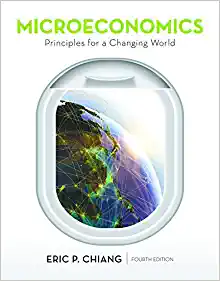Question
1. If the economy is growing at rate n and the government increases the growth rate of the money supply at the same rate, then,
1. If the economy is growing at rate n and the government increases the growth rate of the money supply at the same rate, then, (a) the slope of the budget line is 1 and the slope of the feasible set line is 1. (b) the slope of the budget line is n/z and the slope of the feasible set line is n. (c) the slope of the budget line is 1 and the slope of the feasible set line is n. (d) the slope of the budget line is z/n and the slope of the feasible set line is 1.
2. The real rate of return to money with an expanding money supply at rate z, population growth n, and government purchases g, is, (a) vt+1 vt = n z g. (b) vt+1 vt = n g . (c) vt+1 vt = ng. (d) vt+1 vt = n z .
3. In the basic overlapping generations model with money as the only asset, if individuals in some future period T do not believe in the value of money then, (a) the current young and the current old trade in barter. (b) the current young and the current old trade goods for money. (c) the current young consume y, and the current old consume m. (d) the current young consume y and the current old consume 0.
4. In the overlapping generation model, the welfare cost of inflation, caused by an expanding money supply is that, (a) people lose their jobs. (b) people consume a different combination of goods. (c) the economy ends up wasting resources. (d) people overuse money relative to what is optimal.
5. In the overlapping generations model the Golden Rule monetary policy is the one that, (a) maximizes the welfare of the initial old. (b) drives the value of money to infinity. (c) keeps prices constant. (d) keeps the the stock of money constant.
6. Suppose the government purchases goods g (per young person) in an economy with a constant population. If the government finances g with both seignorage (money is printed at rate z > 1) each period and a lump-sum tax each period, then the feasibility constraint is, (a) c1 + c2 + g y z . (b) c1 + zc2+ y g. (c) c1 + zc2 + g y . (d) c1 + c2 y g
7. Consider two economies A and B, which are otherwise identical except that the growth rate of the money supply is higher in A: z A > zB. Then, (a) welfare is higher in economy A. (b) the two economies have the same feasibility constraint. (c) welfare is the same in the two economies. (d) the feasibility constraint is steeper in economy B.
Step by Step Solution
There are 3 Steps involved in it
Step: 1

Get Instant Access to Expert-Tailored Solutions
See step-by-step solutions with expert insights and AI powered tools for academic success
Step: 2

Step: 3

Ace Your Homework with AI
Get the answers you need in no time with our AI-driven, step-by-step assistance
Get Started


